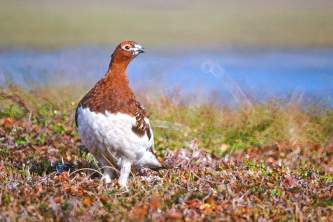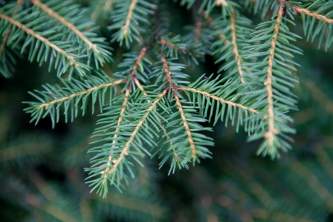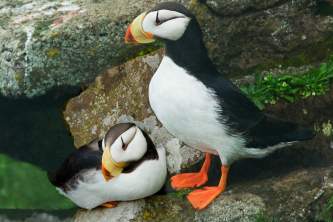Regions of Prince William Sound
In Prince William Sound there are numerous options for multi-day trips. Ultimately you should be following a paddle plan that everyone in the group is capable of doing. Average paddling pace is often said to be four miles-per-hour. The reality however, even with strong paddlers, is three. If you have slow paddlers, reduce that even more and don’t expect to cover much more than a walking pace.
Kayakers without a lot of experience should plan on using water-taxi drop-offs and pick-ups. This gets you into beautiful, dramatic places where you can gain experience on the water without having to stray far from shore, or even from your camp. Newcomers typically appreciate getting dropped off at a camping site, setting up a home base, and going from there.
More experienced kayakers have lots of options for point-to-point trips, including paddling in and/or out of Whittier. It’s worth considering a water-taxi for either starting further out in the sound, or for having the time to explore more without having to paddle back to Whittier. Time after time, tired kayakers try to paddle the last 10 miles into Whittier, encounter 3 or 4-foot seas and/or high winds, and too often need to be plucked out of the water due to hypothermia or because they can’t make any ground against the wind. This is a good reason to schedule a pick-up or to paddle out of Whittier, rather than paddling back in.
Whittier Access
Kayak launching and retrieving points in Whittier are, ironically, scarce. Ideal (for safe navigation) kayak entry is Smitty’s Cove or Honey Beach, which is past the industrial docks and the center of town. You can ask local outfitter or charter services for current parking options. A private beach exists next to the ferry terminal, but you then have to paddle the length of the industrial docks and navigate ferries and boat traffic. There is also a parking lot at the head of the bay near the tunnel, but you can’t leave a car there and it is less than ideal given its exposure to any prevailing winds or seas.
Blackstone Bay
This is a scenically spectacular area that is also within paddling range of Whittier. The trade-off for easy access is the high volume of kayak and boat traffic during tourist season. Also, to date, every fatality in the kayak community has been in Blackstone. There are several reasons for the fatalities. Blackstone Bay is only 22 miles from Whittier and it has every type of glacier: tidewater, alpine, and hanging, which makes the location desirable and relatively short with no camping on the way out or in. Unfortunately the dangers are often underplayed. Some people have all the experience in the world but have never dealt with fierce down-sloping winds created by Alaskan high pressure systems that are frequently present in Blackstone Bay. To avoid a dangerous situation, be aware that these are not protected waters and you should never paddle on the western side of the bay - period. Additionally, the riptide area on the south end of Willard Island is a significant safety hazard that all paddlers should note. Finally, Blackstone Bay is a radio blackout area, so the risk factors discussed above are amplified by the fact that rescues, if necessary, are difficult to coordinate.
Harriman Fjord
Dramatic, calving tidewater glaciers, ice-choked waters, and steep mountain faces make this a favorite spot for locals. Harriman, Surprise, Coxe, Barry, and Cascade Glaciers are actively calving. This area usually enjoys viable sea conditions for paddlers and there are some light hiking opportunities with chances to see wildlife.
Black Sands Beach is near the face of the Coxe Glacier and is a good camping spot. Viewpoint Beach is directly across from the entrance to Surprise Glacier inlet. There are numerous camping opportunities on the south shore of Harriman Fjord, which is a great place to get dropped-off and set up a first camp. Viable camping can be found at Toboggan and Two Boulder Beaches to the east of Viewpoint and there are numerous spots to the west, closer to Harriman Glacier.
In wet weather, rains can be torrential as the clouds stack up against the mountains and dump. When high-pressure systems are strong, winds come down off Harriman and/or Surprise Glacier and turn the entire fjord into an absolute wind zone. This seldom occurs, and it's less likely here than there in Blackstone Bay, but be aware of the possibility. Harriman Fjord is a radio blackout area.
Barry Arm
Barry Arm is the western extension of Port Wells leading into Harriman Fjord. With the classic Chugach Mountain back-drop, winds blowing south out of Harriman Fjord are likely. Berg ice from Harriman Fjord’s tidewater glaciers will be encountered in Barry Arm on the outgoing tide. Good camps will be found within a day’s paddle of the entrance to Harriman Fjord, at Point Duran.
There is also the Harrison Lagoon Forest Service cabin on the southwest shoreline of Barry Arm. Be wary of day breezes with winds blowing off the Sargeant Ice Field, out of Harriman fjord. Paddling, you want to leave with the wind at your back rather than paddle in with the wind in your face. Ideally you’re paddling towards Harriman Fjord during early morning, and paddling out in mid-afternoon.
Surprise Cove & Cochran Bay
Around Blackstone Point and into Cochrane Bay, east of Blackstone Bay is the Surprise Cove Marine Park. This is a popular kayaking area as it’s close to Blackstone and reachable from Whittier when conditions are right. Crossing of Cochran Bay is a specific hazard if there’s incoming weather or white-capping. If you want to beat it, paddle in a couple miles for calmer conditions and to lessen prevailing sea conditions rather than crossing Cochran Bay. Once across, you can paddle down the eastern shore to Three Fingers Cove and hike a mile in from the beach to the Schrode Lake Cabin.
Culross Passage
Culross Passage is nine miles of protected waters with viable camping beaches. This is a premier destination spot whether just paddling from end to end, or if it’s part of a longer paddle plan.
Even in extreme weather conditions, stiff breezes come up but no significant waves develop within the passage. A new cabin has been established in Goose Bay, the very middle of Culross Passage, and there are plenty of camping spots to choose from throughout the passage for smaller groups. Excellent camping will be found on the Applegate Spit and on Applegate Island.
It’s a 4 mile crossing from the south end of the passage to Nellie Juan. In the best of conditions you should expect this crossing to take at least 1.5 hours. To minimize your chance of getting caught up in wind and waves, spend an hour paddling along the northwest shore of Port Nellie Wan before making the crossing to access the southern shore.
Nellie Juan
This is a great place to get dropped off for dramatic, glaciated, rugged, mountain scenery. Deepwater Bay is a fascinating place with spectacular white sand beaches. Close to it are Derickson and Graystone Bays, locally known as the Yosemite of Alaska due to granite faces and a miniature half-dome. Hiking opportunities in this area are phenomenal, likely the best in Prince William Sound. From Deepwater Bay you can go up the rock face and it’s like a beautiful moonscape because the whole area was covered in ice not long ago.
Nellie Juan Glacier is dangerous to approach, so keep your distance. For access into Nellie Juan Glacier, go in with the tide and paddle around the corner to look at the glacier. If it's calving, the resulting surge waves work off both sides of the narrow opening and can be unmanageable. Be careful if you choose to go in there. It is safest to approach this glacier on foot, but as with kayaking, be aware of potential surge waves washing over the rocks.
At the terminal moraine of Derickson Glacier there is a large waterfall coming down the rocks. This is a great camp area. Berg ice can collect in Derickson Bay and it will be moving at random, especially during the most active portions of each tide cycle.
Perry Island (Mears Beach)
Circumnavigating this island is a nice way to spend a few days without seeing a lot of people. Kayakers typically get dropped off and picked up as there’s no way to get there without big open-water exposure. Mears Beach, on the southern side of the island, is a good place to begin as there’s great camping and a panoramic view of Knight Island Passage and Naked Island. Weather will decide how accessible the windward (eastern) side of the island is for paddling, and the coastline on this side isn’t very good for camping.
Icy Bay, Nassau Fjord, & Whale Bay
Ice and whales and one of the best weather areas in PWS. Two hours in the water-taxi gets you 70 miles away from Whittier, which means there's little traffic. As you paddle into Icy Bay, your first major fjord is Nassau Fjord, which takes you into the Chenega Glacier. Whale Bay and Humpback Cove each got their names from the animals that occupy them. If you venture this far out you'll have excellent whale sighting opportunities, including orcas. You can also paddle to a Kittiwake rookery in Gaamaak Cove. Interestingly, it can be pouring rain at Harriman Glacier, but there will be sunshine and slightly warmer temperatures in this area.
You're likely to experience stiff afternoon breezes off the ice field, but the result is not heavy waves. You may be able to see into Port Bainbridge and the Gulf of Alaska – but don’t paddle into Bainbridge Passage as there are extremely strong and dangerous currents there.
Esther Passage
Very scenic through the 10 mile passage. Viable camping at both ends and a good spot in the middle. Those paddling north into College Fjord or east to Eaglek/Unakwik may choose to incorporate Esther into their paddle plan.
Eaglek Bay
Most people go to Eaglek Bay for privacy, not for glaciers. There are plenty of beautiful camping spots, as well as a dramatic waterfall at the head of the bay. Eaglek and Unakwik will offer a more remote experience, especially during high season. From south Esther, the near shore islands offer good exploration opportunities. Meares Glacier at the top of Unakwik is very hazardous to any proximal campsites. Beware of active bear baiting stations (legal until June 15) in these areas.




